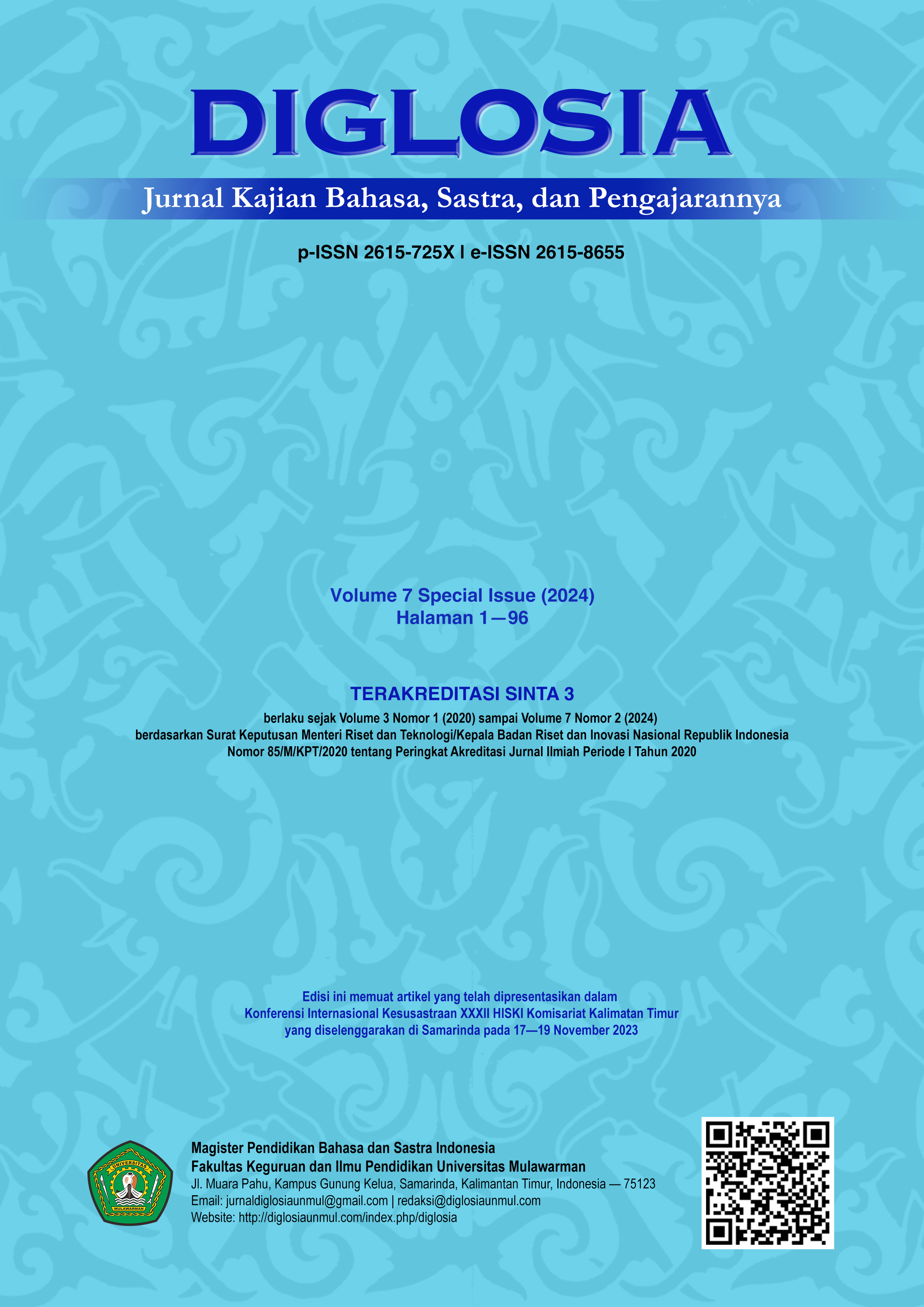Dimensi religiositas dalam Kandan Dayak Siang Dimensions of religiosity in “Kandan” Dayak Siang
Main Article Content
Abstract
This research aims to describe the dimensions of religiosity contained in Kandan Nawui Bojah. These dimensions of religiosity include (1) the ideology/belief dimension, (2) the practice dimension of worship, (3) the experience dimension, (4) the dimension of religious knowledge, and (5) the consequence dimension contained. In Kandan Nawui Bojah/Beas, there is an ideological dimension in the form of a view that acknowledges the truth that through the sown rice, they can communicate and convey messages to their sangiang or ancestors. The dimensions of worship practices in Kandan Nawui Bojah can be seen in the rituals carried out by the Dayak Siang community. They practice worship by sowing rice (bojah tawui). The Experience Dimension in Kandan Bojah Nawui is seen in the experience or perception that padi or rice has long been promised to humans that it will support humans. The dimension of religious knowledge in Kandan can be seen in knowledge about the ritual of nawui bojah or sowing rice. Community religious knowledge regarding the ritual of nawui bojah, or sowing rice, is absolute and must be believed by Kaharingan followers. The consequence dimension contained in Nawui Bojah's kandan explains the consequences that occur if someone wastes rice.
Downloads
Article Details

This work is licensed under a Creative Commons Attribution-ShareAlike 4.0 International License.
![]()
Every work in Diglosia: Jurnal Kajian Bahasa, Sastra, dan Pengajarannya is licensed under a Creative Commons Attribution-ShareAlike 4.0 International License.
Under the following terms:
- Attribution — You must give appropriate credit , provide a link to the license, and indicate if changes were made . You may do so in any reasonable manner, but not in any way that suggests the licensor endorses you or your use.
- ShareAlike — If you remix, transform, or build upon the material, you must distribute your contributions under the same license as the original.
- No additional restrictions — You may not apply legal terms or technological measures that legally restrict others from doing anything the license permits.
Authors who publish with this journal agree to the following terms:
- Authors retain copyright and grant the journal right of first publication with the work simultaneously licensed under a CC BY-SA 4.0 DEED Attribution-ShareAlike 4.0 Internationalthat allows others to share the work with an acknowledgment of the work's authorship and initial publication in this journal.
- Authors are able to enter into separate, additional contractual arrangements for the non-exclusive distribution of the journal's published version of the work (e.g., post it to an institutional repository or publish it in a book), with an acknowledgment of its initial publication in this journal.
- Authors are permitted and encouraged to post their work online (e.g., in institutional repositories or on their website) prior to and during the submission process, as it can lead to productive exchanges, as well as earlier and greater citation of published work.
References
Bogdan, R. C., & Biklen, S. K. (1982). Qualitative Research for Education: An Introduction to Theory and Methods. Allyn and Bacon.
Stark, R., & Glock, C. Y. (1970). American Piety: The Nature of Religious Commitment. University of California Press.
Glock, C. Y., & Stark, R. (1966). Christian Beliefs and Anti-Semitism. Harpes & Row.
Mangunwijaya, Y. B. (1988). Sastra dan Religiositas. Kanisius.
Moleong, L. (1991). Metode Penelitian Kualitatif. Remaja Rosdakarya.
Napel, H. T. (1999). Kamus Teologi Inggris-Indonesia. BPK Gunung Mulia.
Nasir, M. (1969). Islam & Kristen di Indonesia. Media Da’wah.
Sugiyono. (2014). Metode Penelitian Kuantitatif, Kualitatif & Kombinasi (Mixed Metode). Alfabetta.
Sururin. (2004). Ilmu Jiwa Agama. Raja Grafindo Persada.
Thouless, H. R. (2000). Pengantar Psikologi Agama. Raja Grafindo Persada.

